The Best Bodyweight Exercises For All Fitness Levels
Work your whole body with these beginner, intermediate and advanced bodyweight exercises
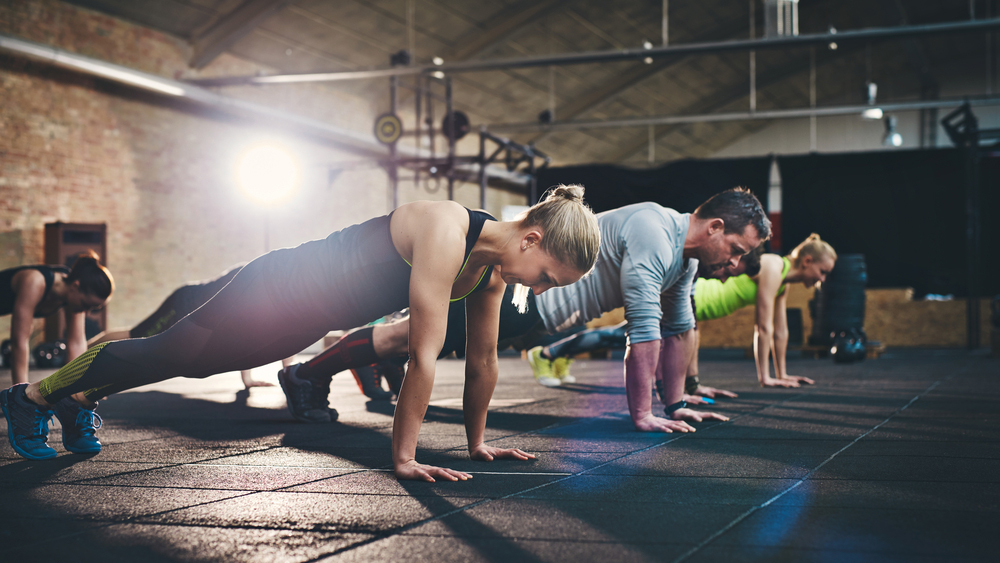
With the right selection of bodyweight exercises you can hit most fitness goals without so much as looking at a dumbbell. In particular, bodyweight exercises are the perfect pick for a lung-busting HIIT workout designed to build lean muscle, and because they typically involve training several muscle groups and joints at the same time, you’ll feel the benefit of bodyweight workouts in your everyday movements and be less likely to pick up injuries.
To ensure your well of bodyweight moves never runs dry, we asked Anya Drozdova, personal trainer at The Fitting Rooms gym, to pick and explain her favourite bodyweight exercises for beginner, intermediate and advanced gym-goers, and we added in a few more for good measure. But first, why bother in the first place?
The Benefits Of Bodyweight Exercises
Bodyweight exercises offer something for everyone
“I am a huge advocate of bodyweight training,” says former Royal Marine turned fitness model Sean Lerwill, “it’s something that’s used a lot in the military. It’s the simplest way to exercise, whether you’re starting your fitness journey or coming back from injury, but even advanced exercisers can benefit massively from incorporating more bodyweight moves into their training programme. It helps master movement patterns, and has tremendous cross-over benefit for weightlifting, sport and everyday life.”
You’re less likely to get injured with bodyweight exercises
“Let’s face it, if you can’t do a perfect bodyweight squat, you have no business going anywhere near the squat rack and a loaded barbell. All you’ll do is make form compromises to allow you to lift the bar, and over time those poor movement patterns will lead to injury. Indeed, it’s far more likely that you’ll get injured using weights than you will with bodyweight moves, because with bodyweight exercises you’re much more aware of how your muscles are moving.”
Bodyweight exercises will help you break through training barriers
“If you’ve hit a strength or size plateau then bodyweight moves are a great way to get off it and start making progress. Take the bench press: if you spend some time working on the press-up and its variations [see below], that will allow you to focus on any weaknesses, strengthen your core, and play around with sets, reps, tempo and rest periods. You’ll give your body the new stimulus it needs to grow bigger and stronger when you go back to the bench.”
Bodyweight exercises allow for fast progress
“With bodyweight exercises there are many small tweaks you can use to make it slightly harder but without the risks of weights. When lifting a barbell or dumbbells, the weight increments are quite steep, but when moving just your body you can change your hand position or feet position, or slow the tempo of each rep, or include a rest-pause at the bottom position. There are all safe, simple tweaks that really do make a huge difference.”
Beginner Bodyweight Exercises
Straight-arm plank
Why “The plank is a simple but effective exercise,” says Drozdova. “You have to learn to keep your entire body under tension while maintaining correct alignment. Not only does it strengthen your core, it works your shoulders, arms and glutes, and is a foundational skill for learning how to control your body.
Get the Coach Newsletter
Sign up for workout ideas, training advice, reviews of the latest gear and more.
How “Place your hands on the ground directly beneath your shoulders with your legs extending straight behind you, creating a straight line from your ankles to your head. Look straight down at the floor and squeeze your glutes to tuck your tailbone under. Hold the position for 30 seconds to one minute, or simply for as long as you can while maintaining good form – there’s no point carrying on if you’re sagging in the middle. Look to improve your time by a few seconds each time you do the plank.”
Squat
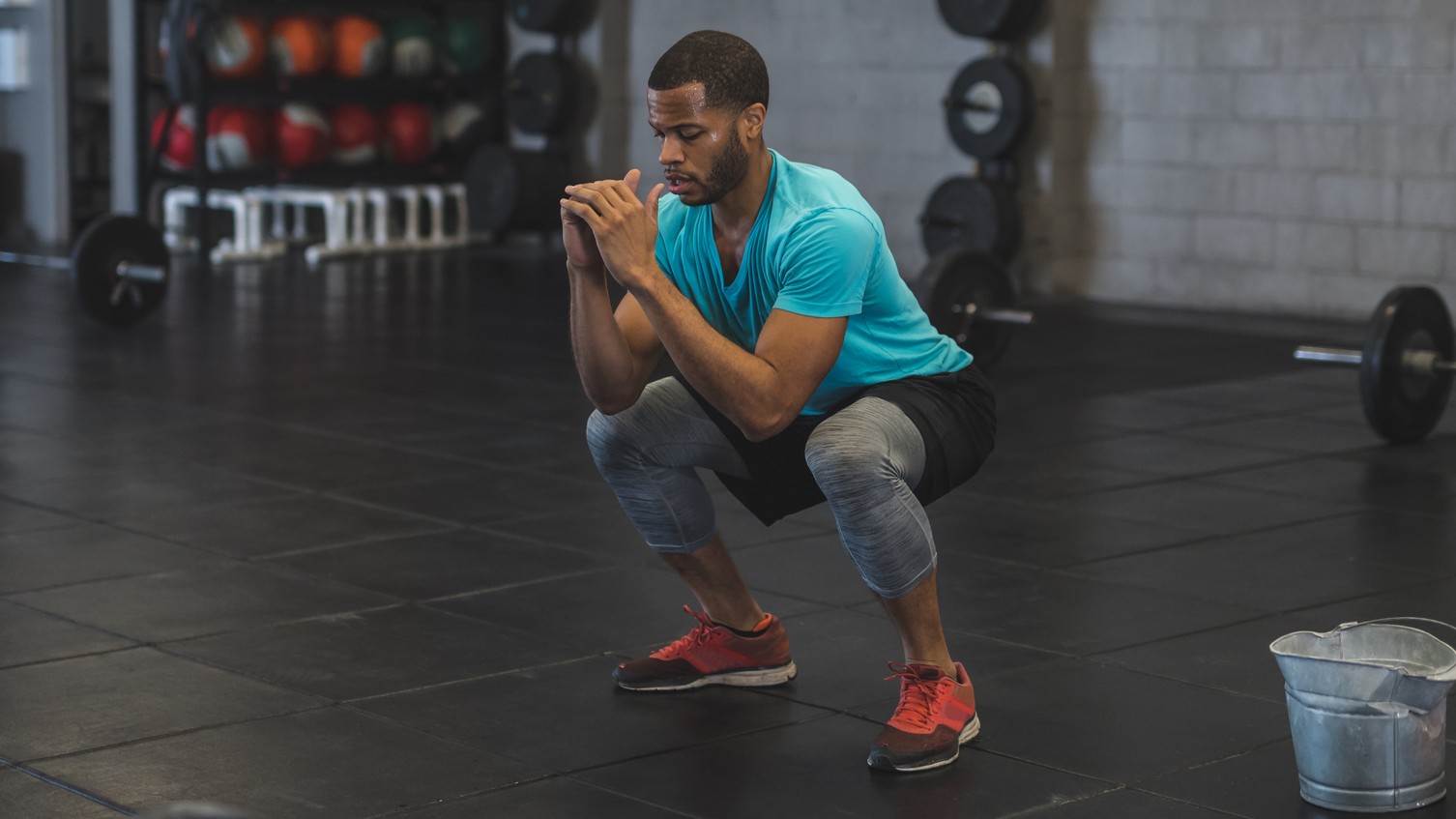
Why “The unweighted squat is not only a great stepping stone to more advanced exercises but also a great strength and mobility exercise,” says Drozdova. “A young child can easily drop down into a deep squat but over time our mobility is compromised by tightness caused by our sedentary lifestyle. This stiffness can contribute to problems like lower back and knee pain.
How “Stand with your feet hip-width apart. Keeping your back straight, descend by bending your knees and bringing your hips down towards the floor. How deep you are able to squat will vary from person to person depending on their mobility and strength, but the aim is to get your thighs at least parallel to the floor while maintaining good form.”
TRX row
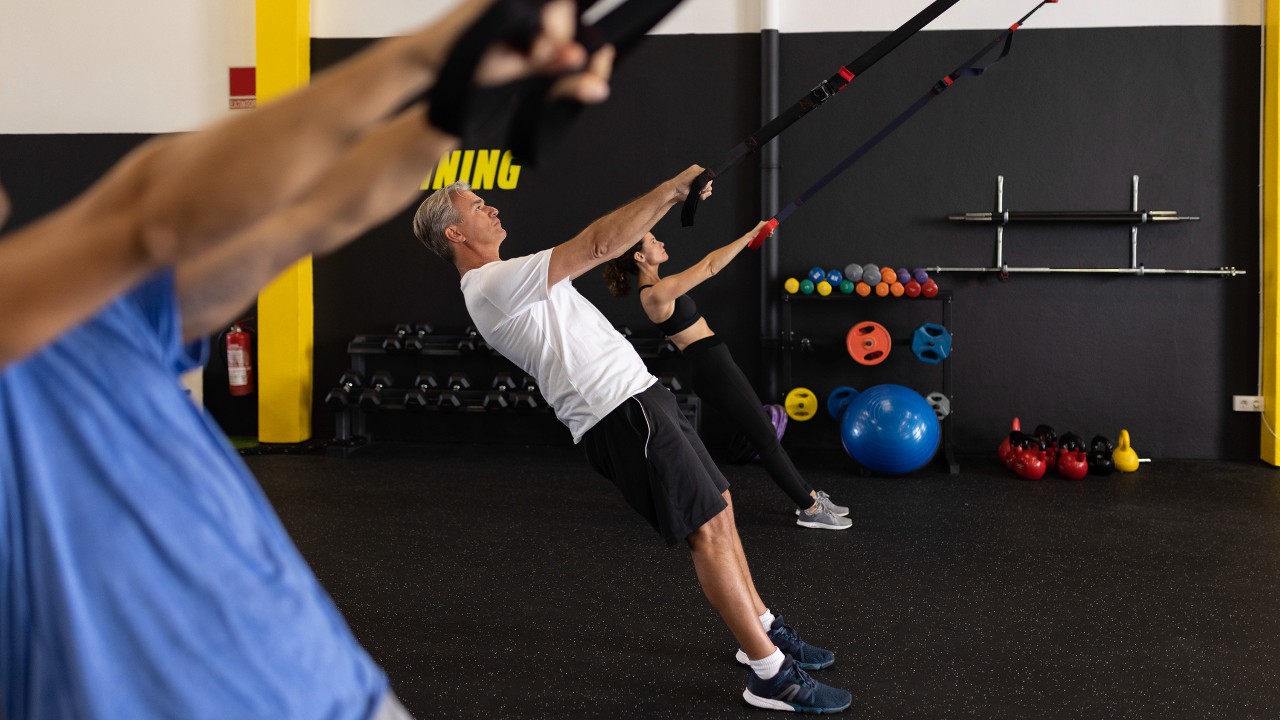
Why “TRX rows can play a big role in maintaining shoulder health,” says Drozdova. “For beginners, they help to develop shoulder, back, grip and core strength.
How “Set the rings to an appropriate height, then grip them and lower your body so your arms are fully extended and your feet are out in front of you with your body forming a straight line, keeping tension throughout your entire midsection. Start the pull by retracting your shoulder blades and bending your arms, and keep pulling until your elbows are behind you. Keep your legs together, knees locked out and core tight.”
Lunge
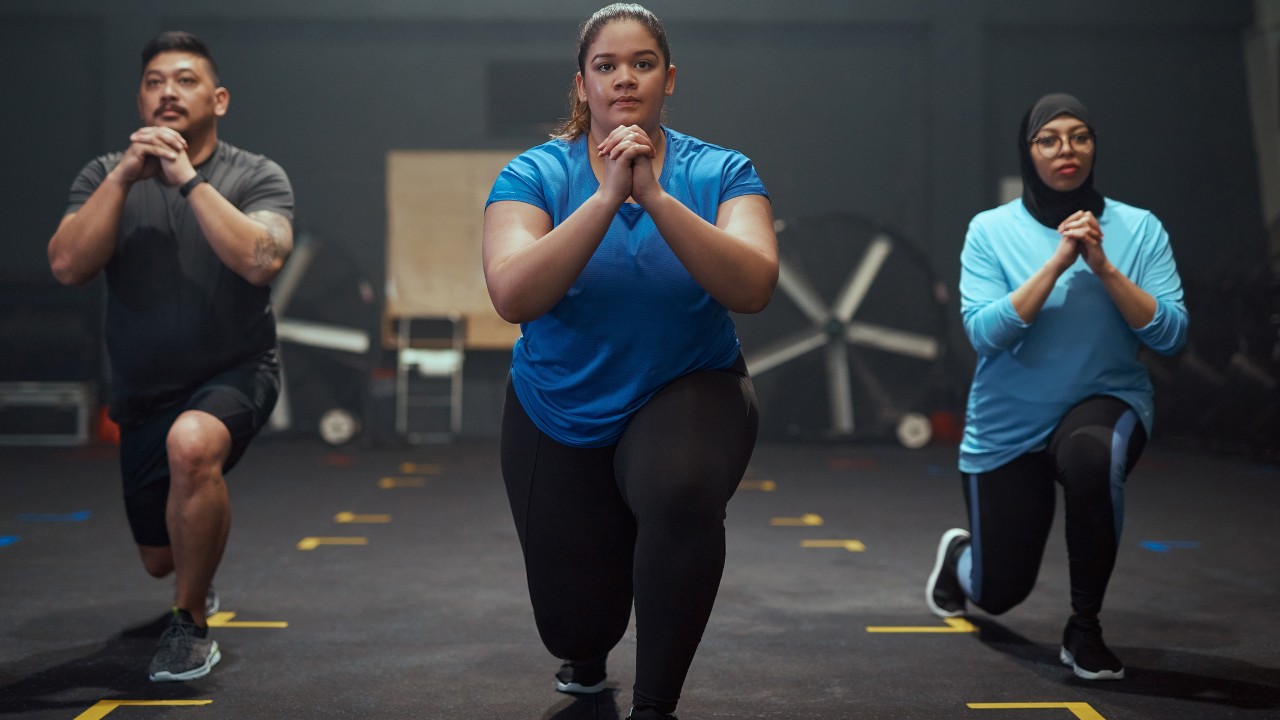
Why The lunge is one of the best lower-body exercises you can do, and it’s also a move with many effective variations to help you keep progressing. The standard lunge works all the major muscles in your legs, hips and glutes to improve your strength, and it’s an exercise anyone who plays sports should add to their routine.
How From standing, take a big step forwards and lower until both your knees are bent at 90°. Your rear knee should be just above the floor. Then push back up through your front heel to return to standing, bringing your feet back in line. Keep your core engaged throughout the movement, as well as keeping your back straight and your chin up.
Dead bug
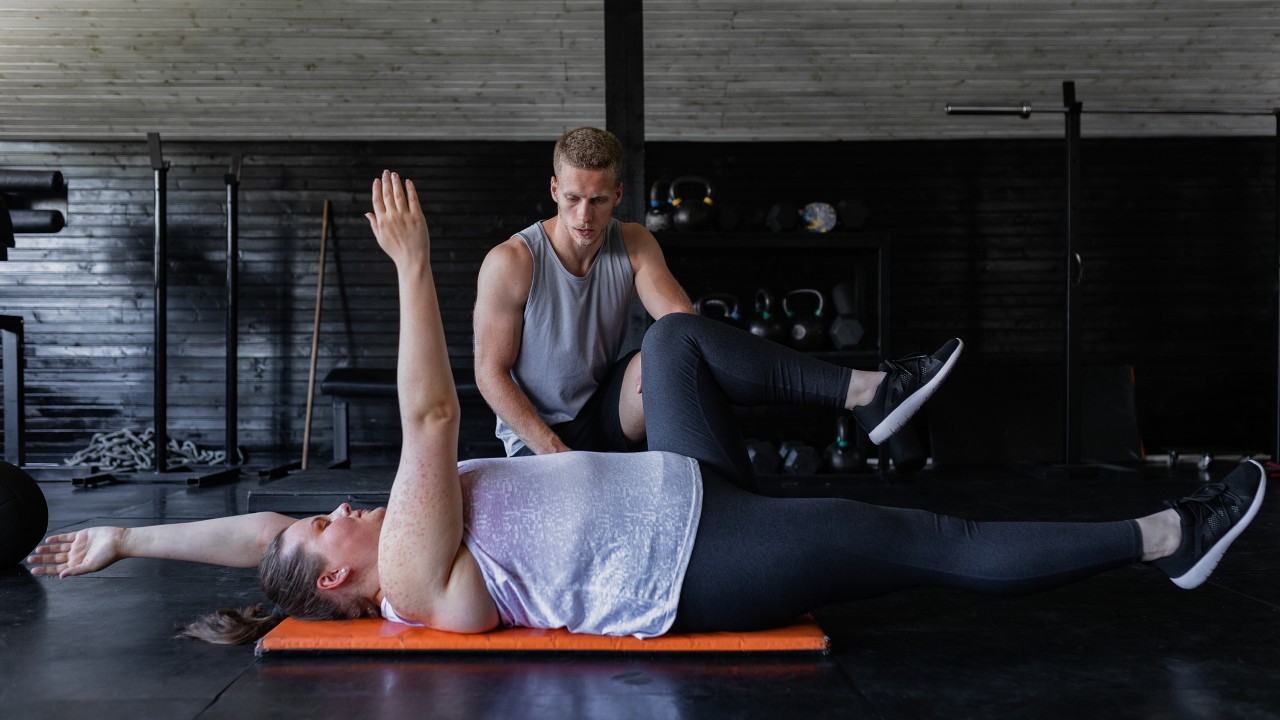
Why In our view, the dead bug is one of the most underrated core exercises there is. It works all of your abs without putting strain on your lower back in the way sit-ups and crunches can.
How Lie flat on your back with your arms pointing straight up and your legs raised so your knees are directly above your hips and bent at 90°. Brace your core muscles and extend your right arm behind you while also straightening your left leg, making sure you don’t raise your lower back off the ground. Bring your arm and leg back to the start, then extend the opposite limbs.
Donkey kick
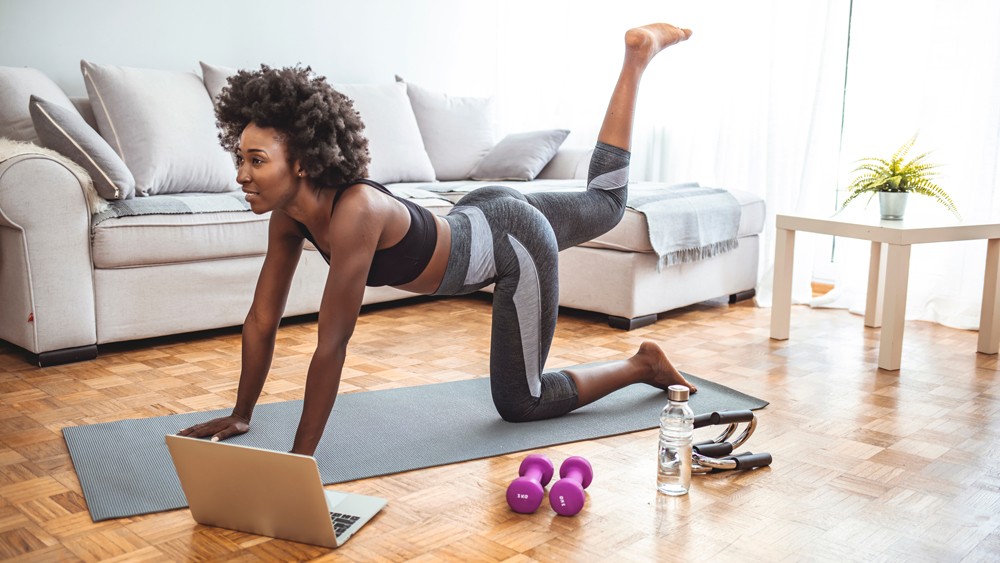
Why This simple, if slightly awkward-looking, exercise works your glutes, lower back, hips and core, making it a move that should be a fixture on any bodyweight training schedule.
How Start on all fours with your hands under your shoulders and your knees under your hips. Engage your core muscles and ensure that your midsection doesn’t sag or arch as you perform the movement. Squeeze your glutes and lift one leg behind you, keeping the knee bent, until the sole of your foot is pointing towards the ceiling, then bring the leg back down slowly. Do all your reps on one leg, then switch to the other.
Hanging knee raise
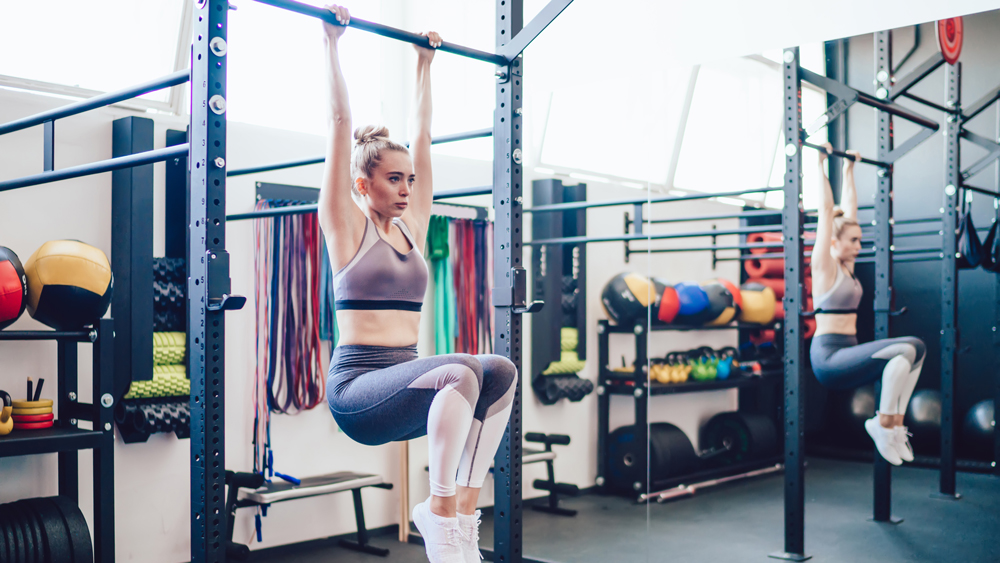
Why Of the surprisingly large number of exercises you can do on a pull-up bar, the hanging knee raise is one of the easiest – which is more to do with how most of the other moves are double hard. It’s well worth including in your routine, however, because it works places most exercises struggle to reach – namely your lower abs and forearms.
How Hang from a bar using an overhand grip with your legs together. Use your lower abs to raise your legs, bending at the knee, until your thighs are parallel with the floor. Lower slowly.
Negative pull-up
Why Prepare yourself for a pull-up (because it’s coming further down this page) by working on the lowering part of the move first.
How Jump up or use a platform to get into the mid-move position – holding your chin above the pull-up bar with an overhand grip, core braced and legs together. Then lower your body as slowly as you can until your arms are straight. It can also be worth testing your grip strength by holding the dead hang position.
Intermediate Bodyweight Exercises
Press-up
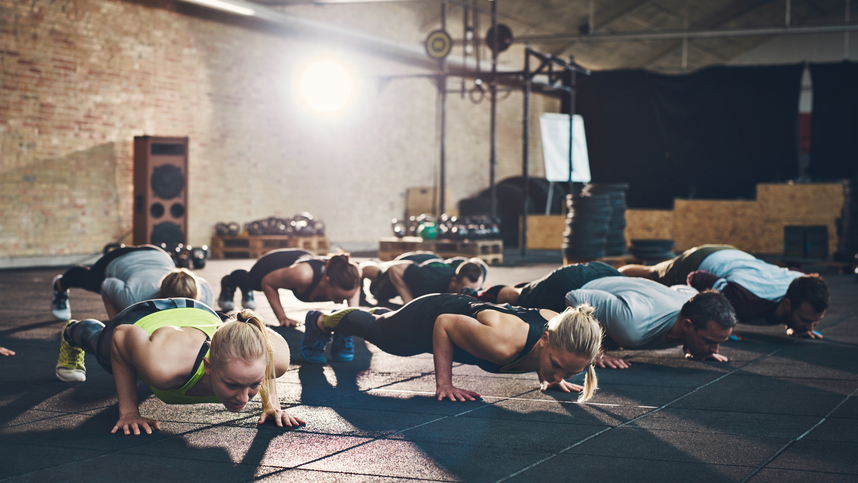
Why “As well as being an upper-body exercise, press-ups work your glutes, core and legs,” says Drozdova. “It is an easy exercise to do anywhere, any time, and once you’ve nailed the basic movement there are many variations to experiment with.
How “Place your hands on the directly beneath your shoulders with your legs extending straight behind you. Keep your core, glutes and legs tight, maintaining a straight line from your head to your ankles. Bending at the elbows, lower your body until your chest comes to within 2cm of the floor, with your elbows staying close to your sides. Press up explosively, fully extending your arms.”
Hollow-body hold
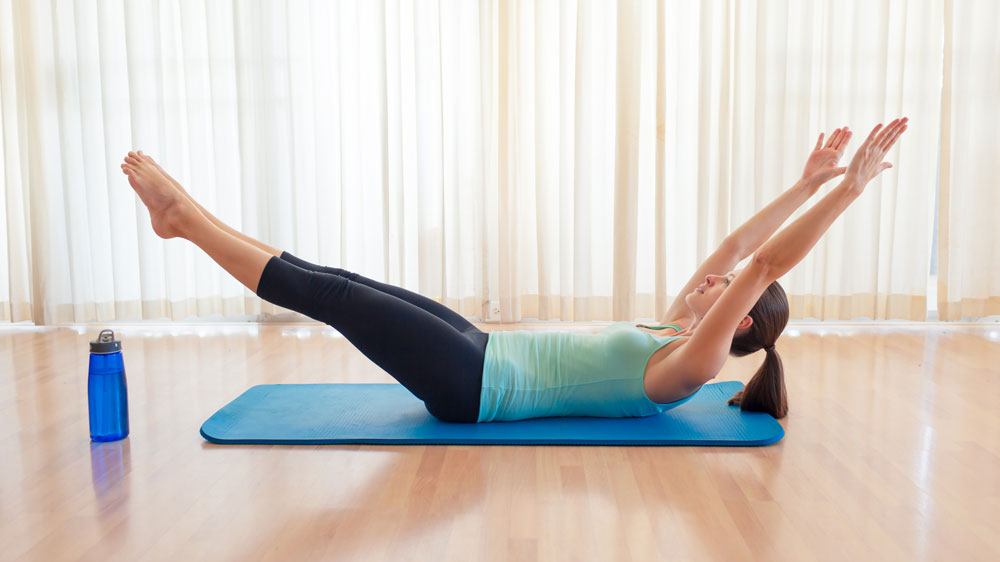
Why “Building solid core strength and learning how to use your entire body as one unit is the foundation for all advanced movements,” says Drozdova. “An exercise like the hollow-body hold is often overlooked at the gym but not only will it allow you to progress to fancier exercises like handstands, it can also fix poor posture and build the kind of strength that transfers to squats, push or pull exercises and even sprints.
How “Lie on your back and bring your arms overhead. Raise your shoulders, hands and feet off the floor to create a shallow bowl shape with your entire body. Make sure your lower back stays firmly planted on the floor. Create tension from your toes all the way to your fingers. Hold the position for 30 seconds to one minute, or as long as you can while maintaining good form. Try to hold it for a few seconds longer each time.”
Pull-up
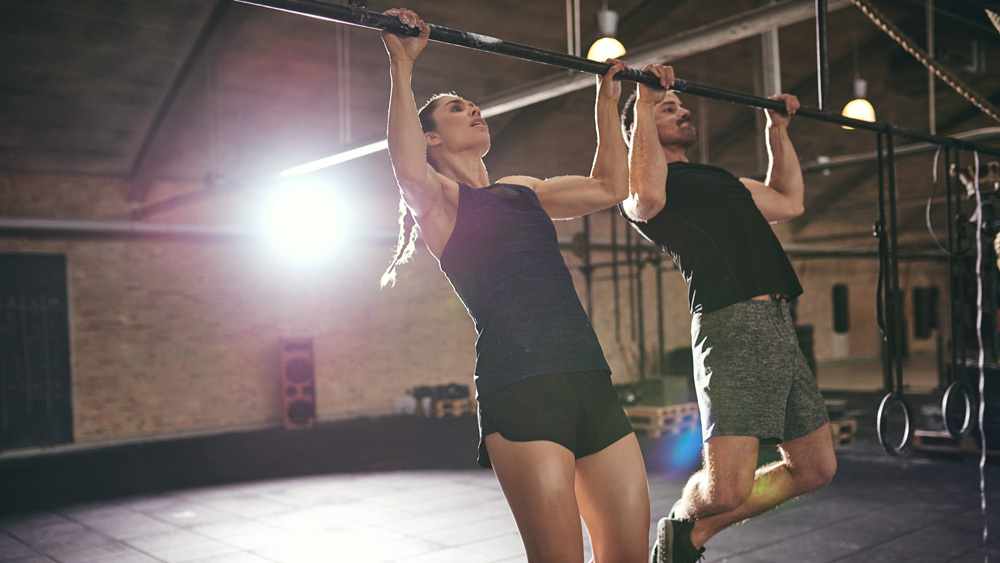
Why “Pull-ups work your back, arms, core and grip and can be a great stretch when done with the full range of motion,” says Drozdova. “Achieving your first pull-up can be particularly challenging and all the steps leading up to it can be a great goal to keep you motivated. Remember that the difficulty of all bodyweight exercises depends on what your bodyweight is and heavier people might find pull-ups too challenging at first. It is also important to have no pain in your shoulders, elbows or wrists when doing pull-ups.
How “Get into a dead hang on the bar using an overhand grip with your arms fully extended. Start by engaging your shoulder blades into a shrug. From there, pull with your back and bend your elbows until your neck reaches the bar. Keep your body in line and your legs straight.”
- Build up the strength to do a full set with this pull-up workout plan for beginners
Split squat
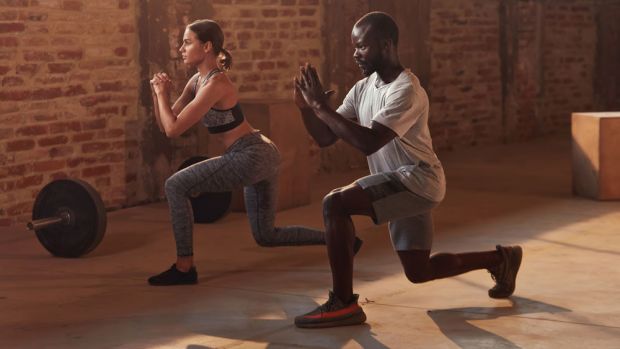
Why The split squat is a cross between a squat and a lunge, and there’s a case for saying it’s better than both of them given that it targets pretty much all the major muscle groups in your lower body. It works your hamstrings, quads, glutes and calves, and it’s a great move for people who participate in sports, especially runners.
How From standing, take a small step forwards, about half the distance you would step for a lunge. Bend at both knees to lower until your rear knee is just above the floor, then drive back up to standing. Do all your reps on one side, then switch.
Tuck jump
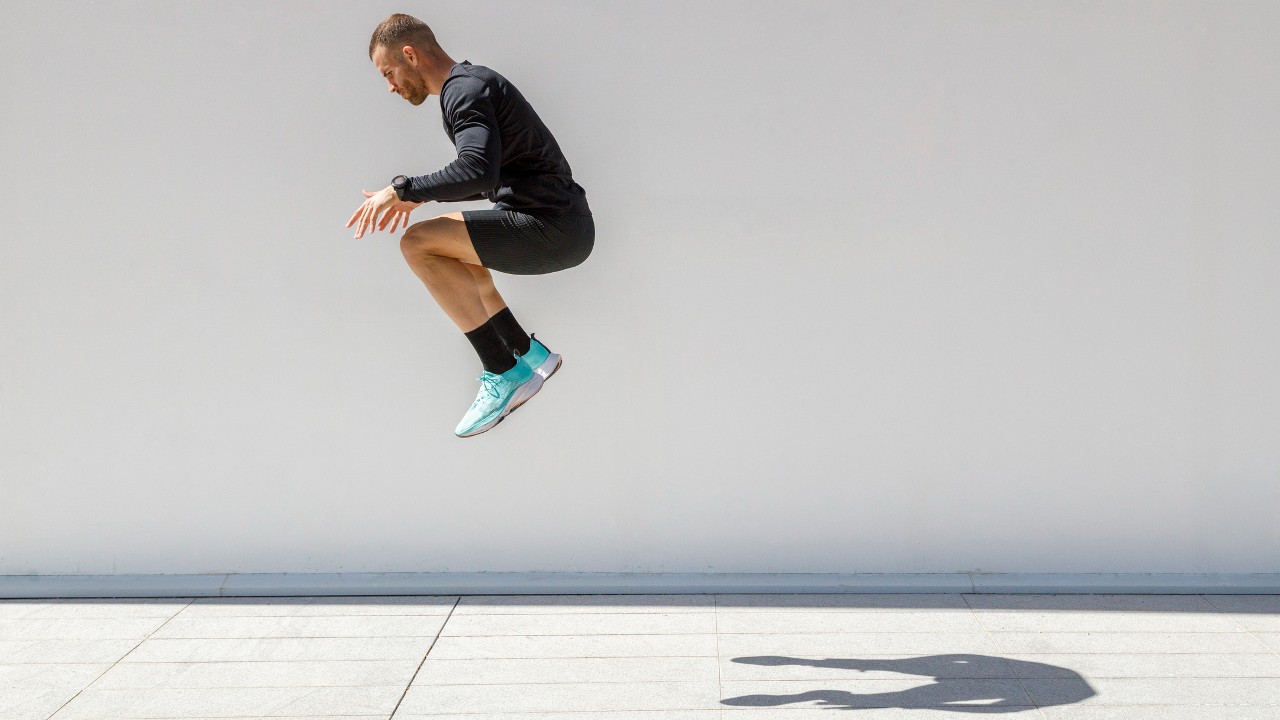
Why This explosive exercise is great for improving the power in your lower body, as well as ramping up your heart rate for cardio benefits, making it ideal for HIIT or circuit workouts.
How From standing, drop into a shallow squat, then jump as high as you can, bringing your knees up to your chest while in mid-air. Land softly and go straight into another squat.
Side plank
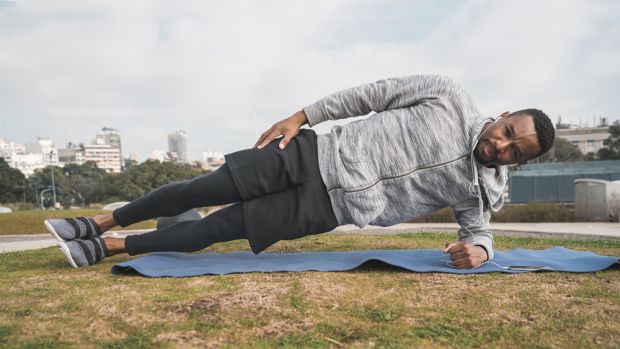
Why This variation on the classic plank works your obliques more than the central abs, so it’s a good way to ensure you’re hitting all the core muscles.
How Lie on your side supported on your forearm, with your hips, legs and feet stacked one on top of the other. Lift your hips so you form a straight line from your neck to your feet. Hold this position for a set time, and then swap to the other side. You can make the move harder by straightening the supporting arm so only your hand is on the floor.
Burpee
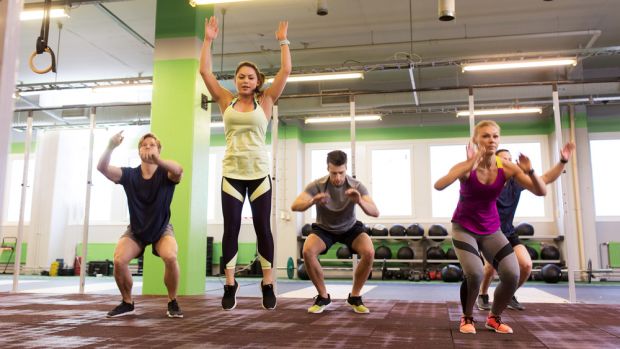
Why One burpee is fine. After three it starts to burn a bit. Any more than that and everyone – everyone – feels a strong desire to adopt the foetal position. Burpees are a hell of a cardio exercise, but they’re simple enough to execute, combining a squat thrust and a jump straight up.
How From standing, drop your hands next to your feet, then jump your feet back so you’re in the top press-up position. Reverse the movement but as you stand up, power straight up into the air. You can increase the demands of the move by dropping your chest to the floor or including a strict press-up in the first part of the move, and/or finishing with a tuck jump or pull-up.
Advanced Bodyweight Exercises
Handstand wall walk
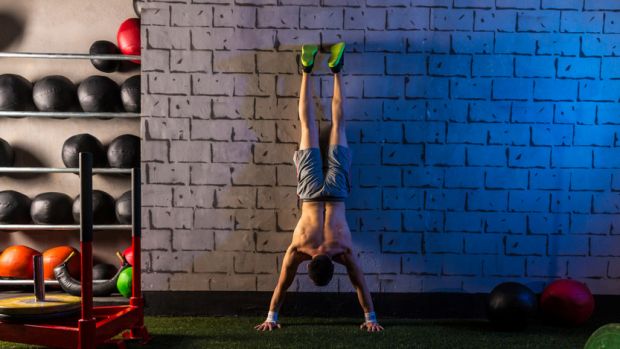
Why “This is an advanced move that will activate your whole posterior chain,” says Drozdova. “The key is to hold a straight line by maintaining tension through your entire body. I think this is great fun – it requires co-ordination and control, and always challenges your body in a slightly different way depending on your hand placement.
How “Get into a handstand facing the wall with your feet resting on it. Tense your core, glutes and legs, and walk your hands away from the wall into a wall plank and then all the way back up the wall.”
Hanging leg raise
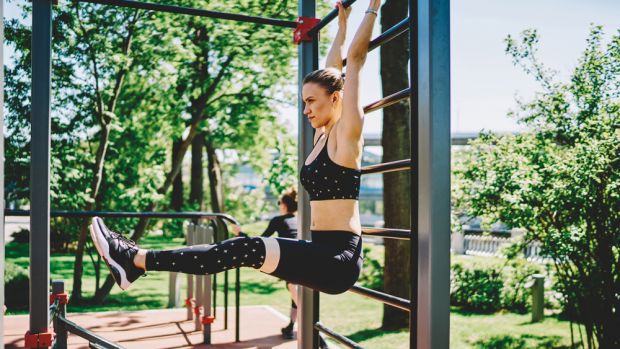
Why “This requires total-body strength and flexibility,” says Drozdova. “It works your abdominals and hip flexors, and increases your overhead mobility and grip strength. Additionally, the skill of learning to compress your body is one not often practised but it forms the basis for more advanced movements like the pike to press handstand. Many assume this exercise is easy, but if you try it with someone keeping your shoulders from leaning back and your legs completely locked out as you raise your feet to the bar, I promise it is far more challenging than you think.
How “Hang from a bar or from wall bars. Without swinging, contract your abs to lift your legs as high as you can while keeping your arms and legs straight. Keep the movement slow and controlled.”
Pistol squat
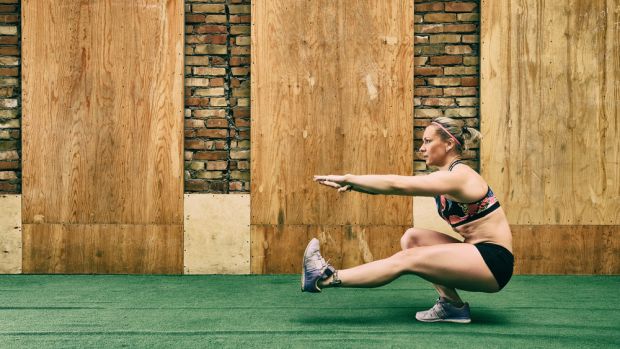
Why “This requires tremendous mobility, balance and strength,” says Drozdova. “Even lifters with impressive barbell squat numbers struggle with this movement because it requires a lot of time and consistent training to get the range of motion and control needed. It is a fun skill-based addition to your training, and keeps your muscles flexible and your body mobile and healthy.
How “Stand with one leg raised, keeping it straight in front of you. Bring your arms out in front of your chest and descend on your standing leg while keeping the lifted leg parallel to the floor. Lower until your hamstring is resting on your calf muscle and then push back up.”
Cossack squat
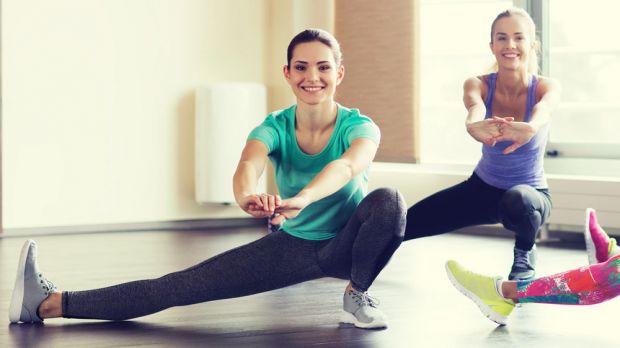
Why Like the pistol squat, this variation develops your mobility and flexibility as well as your strength. If you’re lacking flexibility you may struggle to perform the move at first, in which case keep working on moves like the side lunge and deep squats to increase your range of motion.
How Start by taking a big step to the side. Keep the weight in your heels as you lower your hips back and on that side, bending your knee over your toes while extending the other leg and lifting your toes off the floor. When you feel the stretch in your straight leg come back up, but don’t return all the way to standing. Instead keep your feet apart and drop down into another Cossack squat. Perform all your reps on one side, then switch.
Elbow planche
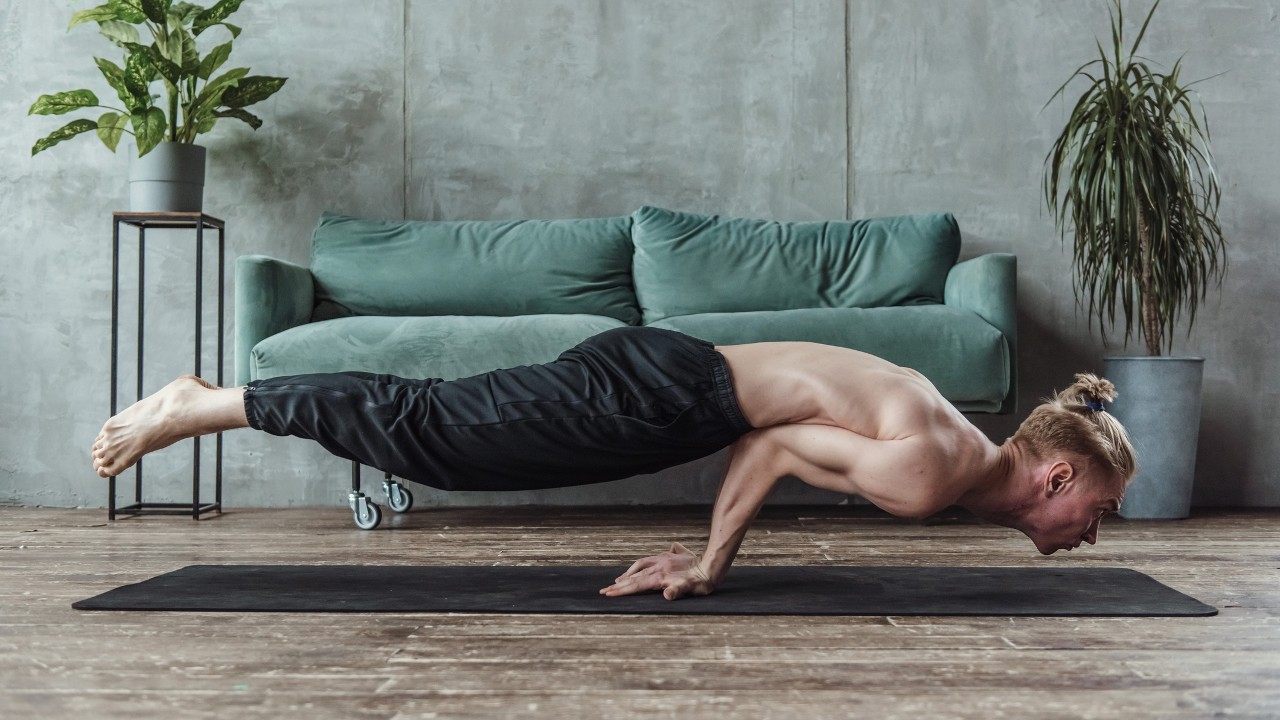
Why The elbow planche is as much an exhibition of strength as it is an exercise to benefit your body, but it does improve your wrist mobility as well as testing your core strength.
How Place your hands on the floor with your fingers pointing either behind you or to the sides. You are going to rest your body on your elbows, so your hands need to be narrower than your hips. Keeping your knees on the floor, pull your elbows in and rest your waist on your elbows. Slowly extend your legs but keep your toes on the floor until you’re confident you’ve found the right balance point and are able to lift your legs so you’re “floating”, supported by your hands with your body resting on your elbows.
Box jump
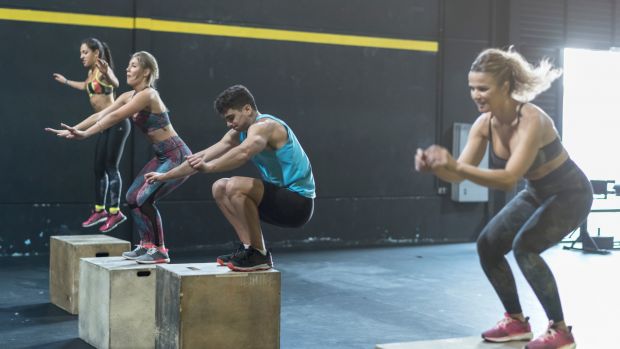
Why The plyometrics poster-boy move will hammer every muscle in your legs, recruit your core, up your heart rate, and do wonders for your co-ordination and balance. Plus, if you stack the boxes high it becomes advanced very quickly.
How Stand in front of a box with your feet shoulder-width apart and a slight bend in your knees. Lower into a half squat while swinging your arms back, then explode through your legs and swing your arms forwards for momentum to jump on the box. Land with both feet, keeping a slight bend in the knees to absorb the shock of landing. Stand upright and then step off.

Nick Harris-Fry is a journalist who has been covering health and fitness since 2015. Nick is an avid runner, covering 70-110km a week, which gives him ample opportunity to test a wide range of running shoes and running gear. He is also the chief tester for fitness trackers and running watches, treadmills and exercise bikes, and workout headphones.
- Jake StonesContributor









